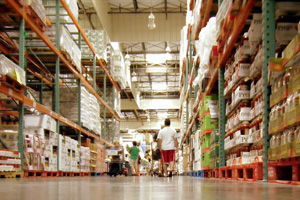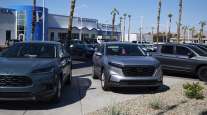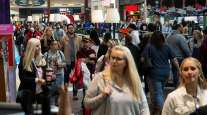Consumer Spending Rises by Most in Almost Six Years

Household spending climbed in May by the most in almost six years, buoyed by gains in incomes as the U.S. job market strengthened.
Purchases increased 0.9%, the biggest gain since August 2009, after rising 0.1% in April, Commerce Department figures showed June 25. The median forecast of 75 economists in a Bloomberg News survey called for a 0.7% advance. Incomes rose 0.5% for a second month.
Consumers finally may be putting savings from lower gas prices to work after holding back earlier this year. Higher stock and home prices that are lifting household wealth, in addition to increases in employment, may help Americans feel secure enough to boost spending.
“We’re clearly seeing a nice acceleration on the part of the consumer,” said Jacob Oubina, a New-York based senior U.S. economist at RBC Capital Markets, who correctly forecast the gain in spending. “It comes down to job growth and better income prospects. It’s going to be a decisive rebound this quarter.”
Another report showed the number of applications for unemployment insurance benefits held below 300,000, a level typically consistent with a strong labor market, for a 16th consecutive week. Jobless claims rose by 3,000 to 271,000 in the week ended June 20, according to figures from the Labor Department.
Projections for consumer spending in the Bloomberg survey ranged from gains of 0.3% to 1%. The previous month’s reading was revised up after initially being reported as little changed.
The Bloomberg survey median called for incomes to rise 0.5%. April’s income reading was revised up from a previously reported 0.4% increase.
The report showed the price index tied to consumer spending increased 0.3% in May from the prior month. It rose 0.2% from May 2014. This inflation measure is preferred by Fed policymakers and hasn’t met their 2% target since April 2012.
Stripping out the volatile food and energy components, the price measure increased 0.1% from the month before and climbed 1.2% in the 12 months ended May.
The report also showed that after adjusting for inflation, which generates the figures used to calculate GDP, purchases climbed 0.6% last month, the biggest gain since August, after being little changed in April.
That increase may provide a needed lift to growth, especially after a poor showing in the first three months of the year. Commerce Department data June 24 showed the economy shrank 0.2% at an annualized rate in the first quarter. Consumer spending climbed at a 2.1% pace after jumping 4.4% at the end of 2014.
Spending on durable goods, including automobiles, increased 2.3% in May after adjusting for inflation, after a 0.1% drop in April, the data showed. Purchases of non-durable goods, which include gasoline, rose 0.9%, while outlays on services climbed 0.2%.
Auto sales have been boosting the spending figures, with cheap financing helping fuel Americans’ appetites for vehicles. Industry data from Ward’s Automotive Group issued earlier this month showed cars and light trucks sold at a 17.7 million annualized rate in May, the strongest pace since July 2005.
Fuel savings also may be benefiting retailers such as restaurants, even if indirectly.
While business at steakhouse operator Ruth’s Hospitality Group Inc. may not be heavily influenced by gas prices due to its customer base, there could be knock-on effects, CEO Michael O’Donnell said at a June 9 industry conference. “What does affect them is if their businesses are doing better because gas prices are down. Then, they’re more likely to spend money.”
Disposable income, or money left over after taxes, increased 0.2% in May from the prior month after adjusting for inflation. It was up 3.5% over the past year. The saving rate decreased to 5.1% from 5.4% in May.




